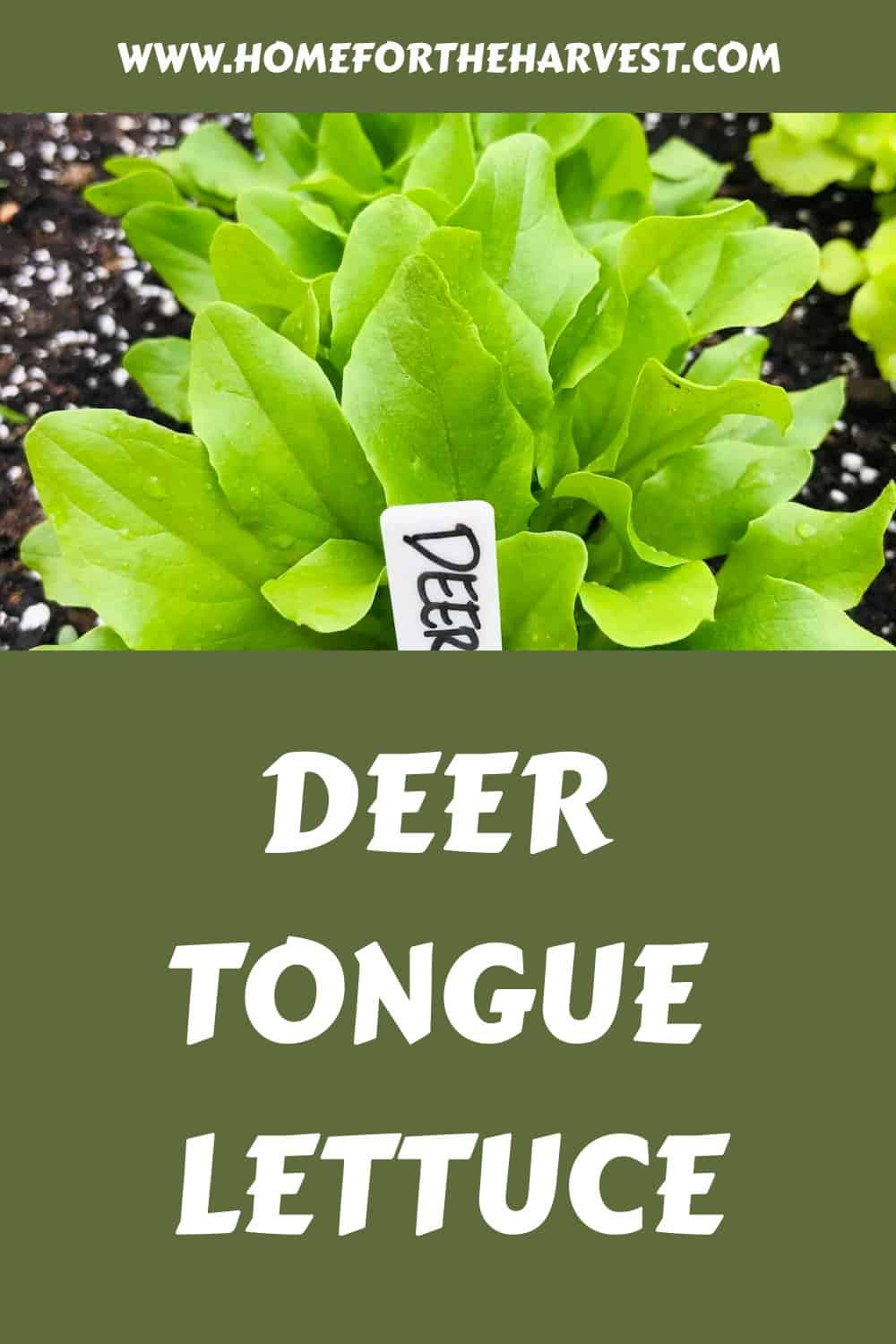Looking for a unique heirloom lettuce variety to grow? Consider Deer Tongue lettuce!
Deer Tongue lettuce is an heirloom variety of loose-leaf lettuce that was a favorite among pioneer families. This robust plant produces outward and upward-pointing green leaves (sometimes with red edges). The leaves have a crisp texture and a lovely taste that’s perfect for salads or wraps. Deer Tongue lettuce plants are heat-tolerant, robust, and perfect for beginner gardeners.
Read on to learn all about Deer Tongue lettuce!
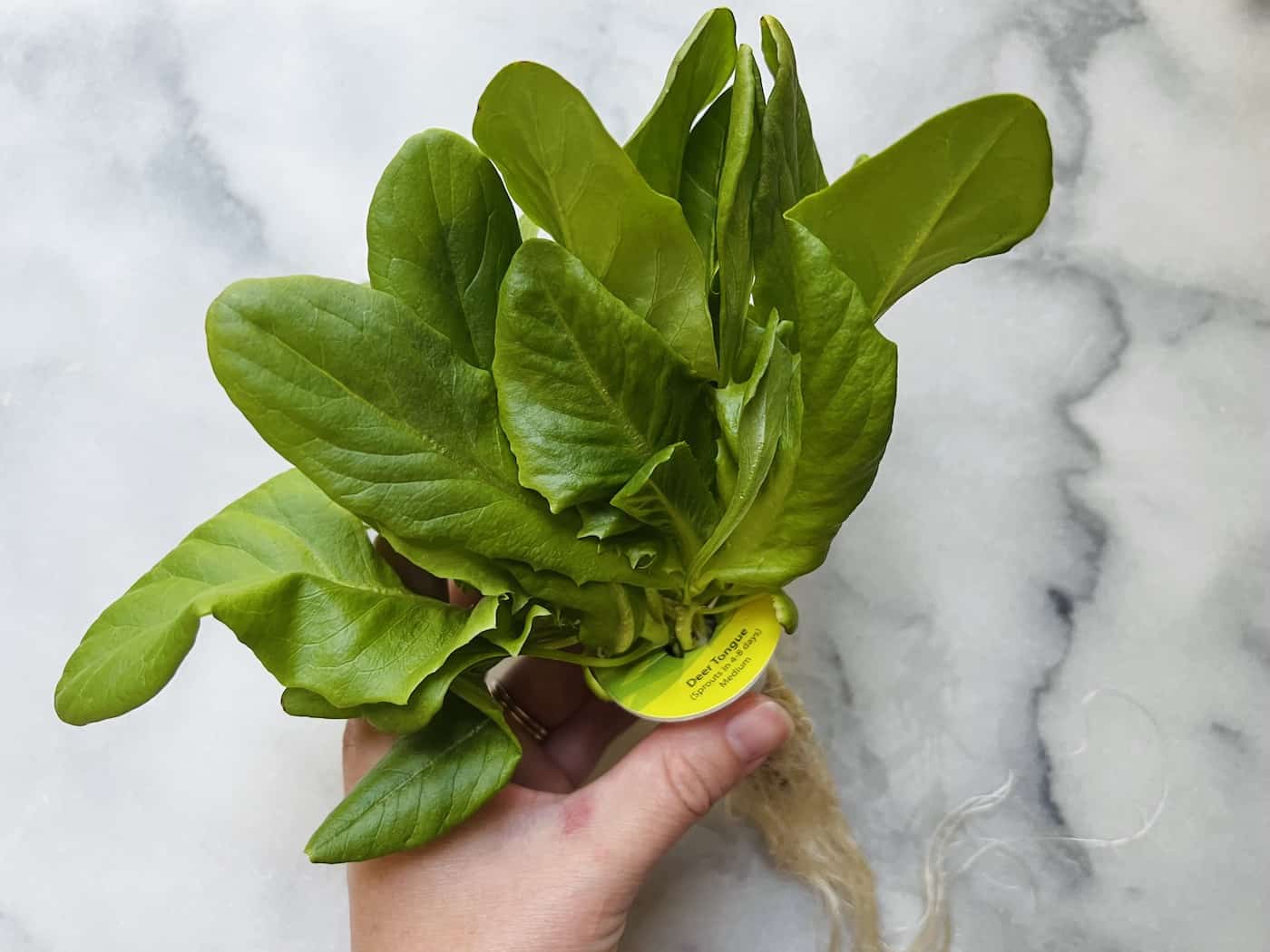
Deer Tongue lettuce basics
Deer Tongue Lettuce is a looseleaf heirloom variety of lettuce. While it’s been around for many generations (think the 1740s), it is not generally commercially produced. Currently, it can primarily be found grown in select home gardens and farms across North America. Other names for this lettuce include Amish Deer Tongue, Red Deer Tongue, and Matchless lettuce.
Deer Tongue lettuce is known for its distinctive dark, triangular leaves. These unique upward-facing triangular leaves have thin midribs and can sometimes even be found with red edges. Like most loose-leaf lettuces, these tender leaves make for another good salad lettuce. While tender, these leafy greens offer a crisp texture, too, with a nutty flavor. While the flavor is mild, it is slightly sweet.
This lettuce is very easy to grow. Like most looseleaf-type varieties, this type is usually direct-seeded out in the garden for harvest as baby greens. It’s a cool-weather crop, so you’ll want to plant seeds at the start of the seasons that offer cooler temperatures. This can look like spring or late summer/early fall, depending on your location.
Deer Tongue lettuce plants are more heat tolerant than most other popular choices of lettuce varieties. This means they can take full sun with good irrigation, but it’s suggested to use partial shade in hot climates or in mid-summer.
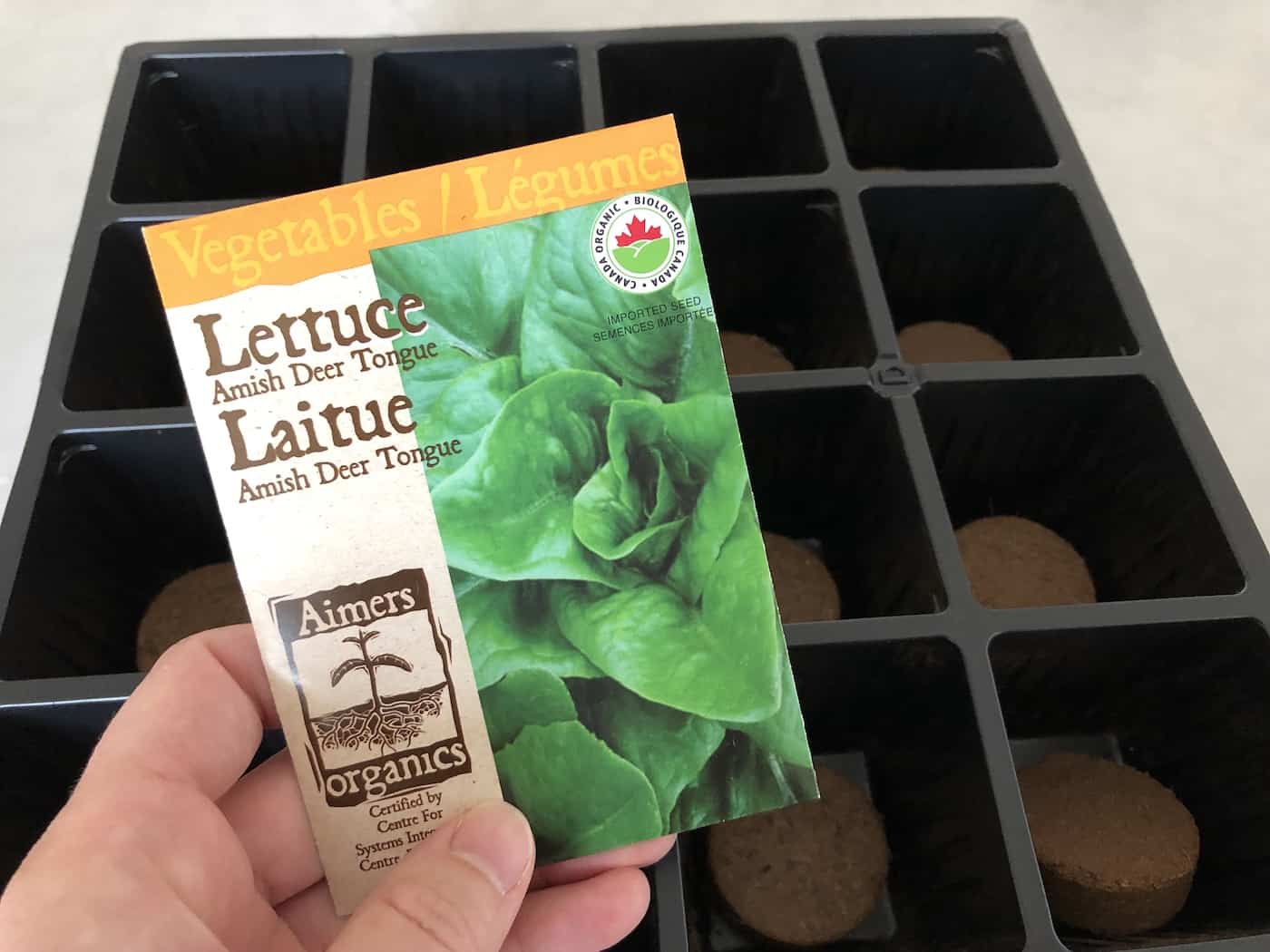
Buying seeds for Deer Tongue lettuce
If you’re looking for Deer Tongue Lettuce seeds for an indoor setup or direct sowing, you can buy them easily online for anywhere from $2.50-$5 for a single packet with a varying amount of seeds included.
Once you’ve obtained your seeds, you should note that helpful instructions usually come along with them. It’s important to note that it’s normal for not all seeds to germinate, even in the most perfect climate and conditions. Germination is usually best in warm moist soil (even though lettuce is a cool-weather crop).
Planting Deer Tongue lettuce
Lettuce can be planted in one of three ways: indoors, directly outdoors, or outdoors via purchased seedling plants. Starting your seeds indoors is often cheaper but more labor-intensive since you will have to eventually transplant them outdoors.
The cheapest and easiest way to plant your seeds is direct seeding outdoors. The caveat is that it is much harder to control plant spacing this way, and you risk the roots having to compete for nutrition if the plants are too close. However, if you want to harvest baby salad greens, this might be the path for you.
What route you want to take will depend on how much money you want to spend, how much work you want to put in, and which process sounds like it would be the most comfortable for you right now. You can always try it a different way next time!
Planting lettuce seeds outdoors
If you’ve decided to direct seed straight into the soil outdoors, then you want to space your seeds about an inch apart. Later on, you’ll thin out the rows to one plant every 8″ (choose the healthiest seedlings to leave). You’ll want to sow your seeds at a shallow depth of about ¼ inches and space the rows about 12-18 inches apart.
Planting lettuce seeds indoors for later transplanting
The transplanting route is often best for gardeners who want to harvest proper 3-6” long lettuce leaves. For the first step, sow the seed roughly ¼ to ½ inches deep in a seedling tray. Mist the tray with water after planting and cover it with a transparent top.
It’s best if the soil stays warm (about room temperature). You can check this using a soil thermometer that gauges your temperature. Once your seedlings have grown for about four weeks, you can transplant them outdoors as intended!
Transplanting lettuce seedlings outdoors
You need to do two things once you’ve waited until the seedlings are ready. First, your seedlings need to be hardened off by reducing their water and putting the plants outdoors a few days before you transplant them. Second, prepare the soil you intend to use outside by digging in a couple of inches of compost, aged manure, or organic fertilizer.
Then you’ll be ready to transplant your seedlings into your garden beds at about 8” inches apart from one another. All of the prep work will assist in preventing transplant shock and potential premature bolting.
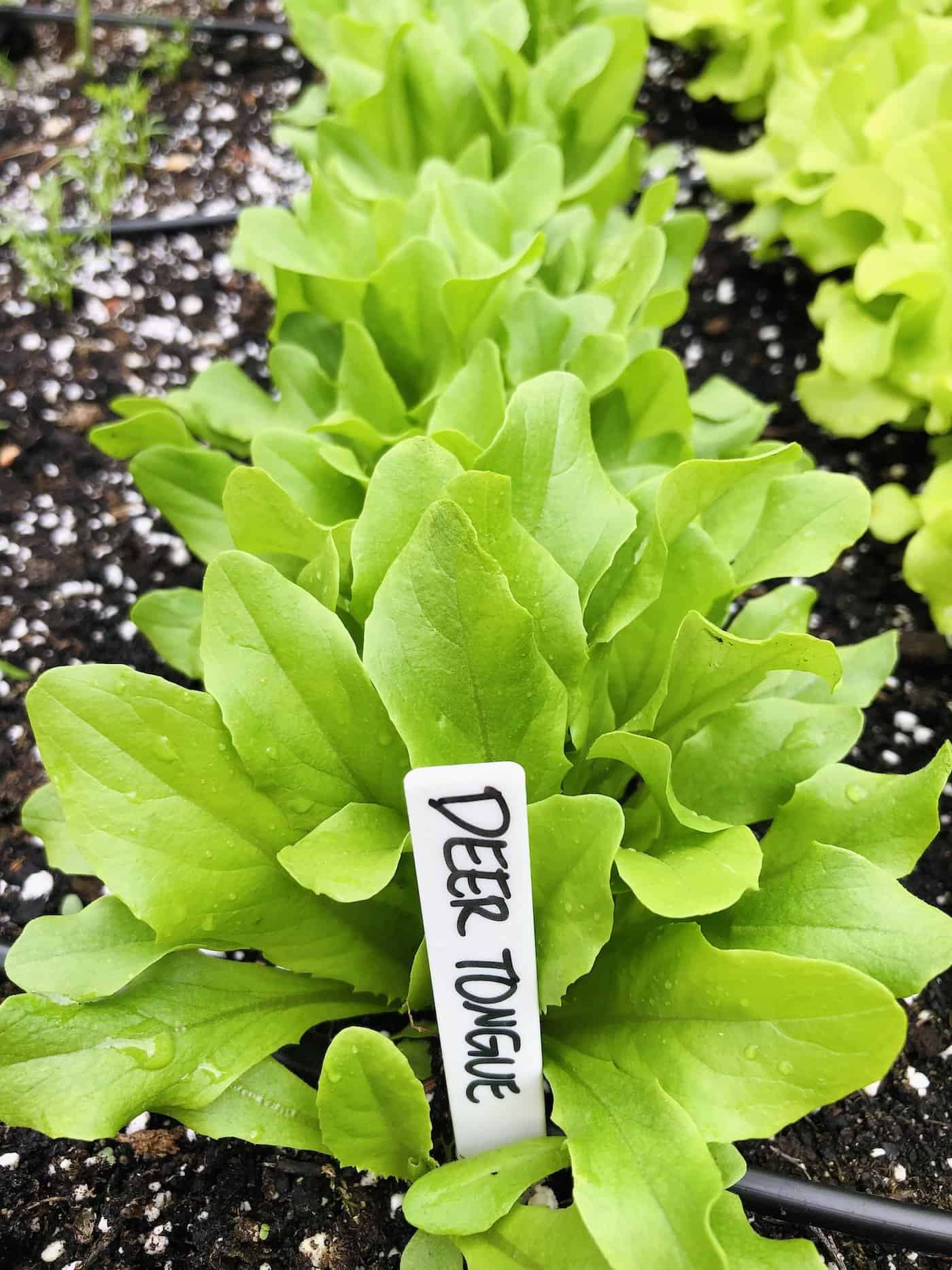
Growing Deer Tongue lettuce
As mentioned, the growing season for your Deer Tongue Lettuce is ideally in cooler temperatures. This cool-weather crop is more heat tolerant than most, but it’s better to plant your deer tongue lettuce seeds during spring or early fall in most climates for an optimal outcome.
You’re going to want to keep an eye on the soil temperature just as you would if you were to start your seedlings indoors. The seeds will germinate anywhere from 40 to 75 degrees Fahrenheit. Ideally, you want your soil to have ample drainage for optimal growth.
Deer Tongue Lettuce grows well with many other garden vegetable plants. Some great companion plants for Deer Tongue Lettuce include carrots, radish, garlic, cucumbers, and other types of lettuce, like romaine or butterhead. Scented plants like nasturtium, chives, and cilantro may also help repel pests.
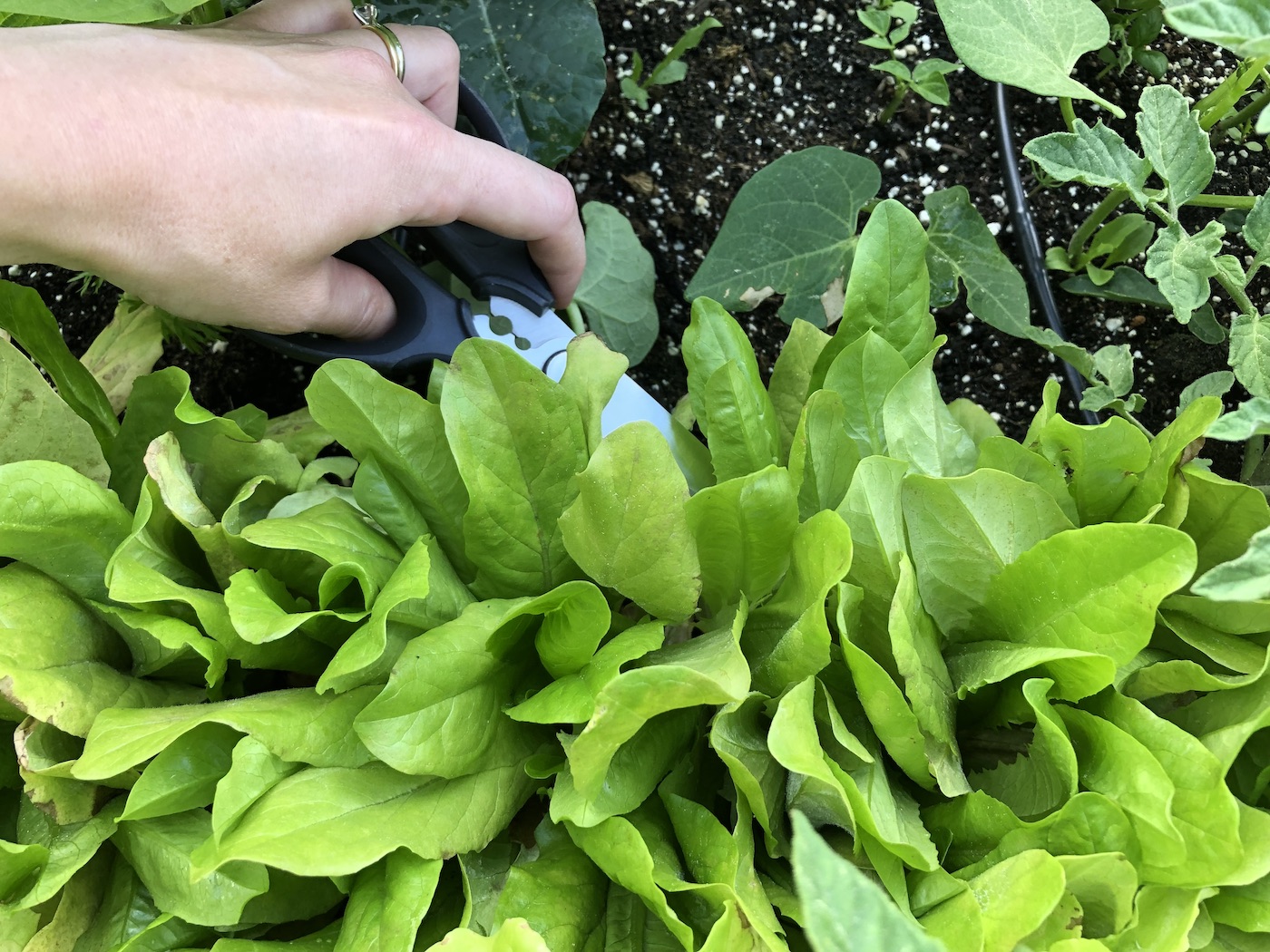
How to harvest Deer Tongue lettuce
Deer Tongue Lettuce is usually harvested by slicing the entire head at the base with a garden knife. You can also cut outer leaves about an inch from the ground individually if you want to use just a small amount that day. Lastly, small leaves can be harvested as baby leaf lettuce.
Whichever route you go, know that if you want fresh lettuce, it will only stay in great eating condition for a very brief time. When you harvest your lettuce, keep it cool in storage in the fridge or use it immediately. Enjoy it as soon as possible after harvest!

Recipes for Deer Tongue lettuce
These leaves can be torn or cut into smaller leaves to create a salad of your choice, but they also make for a great layer of greens in sandwiches and burgers. These leaves can also be used as a simple garnish on dishes like fish or steak. Deer Tongue Lettuce pairs well with aged cheeses and fresh fruit.
The Splendid Table suggests using Deer Tongue Lettuce leaves in a melon salad with fresh goat cheese and Dijon mustard. If you’re a fan of a fruits and greens combo, you’re going to want to try this next!


